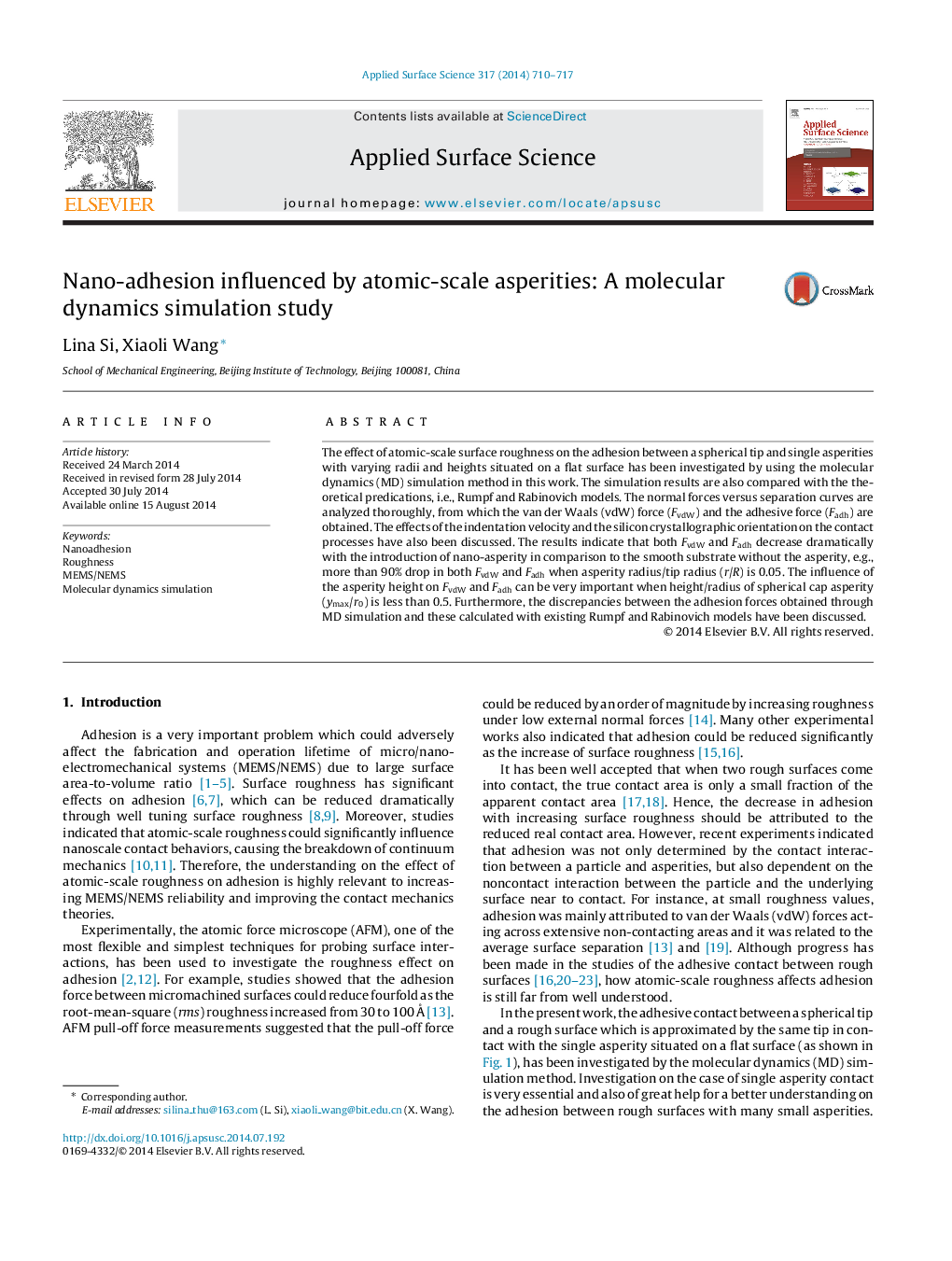| Article ID | Journal | Published Year | Pages | File Type |
|---|---|---|---|---|
| 5361042 | Applied Surface Science | 2014 | 8 Pages |
Abstract
The effect of atomic-scale surface roughness on the adhesion between a spherical tip and single asperities with varying radii and heights situated on a flat surface has been investigated by using the molecular dynamics (MD) simulation method in this work. The simulation results are also compared with the theoretical predications, i.e., Rumpf and Rabinovich models. The normal forces versus separation curves are analyzed thoroughly, from which the van der Waals (vdW) force (FvdW) and the adhesive force (Fadh) are obtained. The effects of the indentation velocity and the silicon crystallographic orientation on the contact processes have also been discussed. The results indicate that both FvdW and Fadh decrease dramatically with the introduction of nano-asperity in comparison to the smooth substrate without the asperity, e.g., more than 90% drop in both FvdW and Fadh when asperity radius/tip radius (r/R) is 0.05. The influence of the asperity height on FvdW and Fadh can be very important when height/radius of spherical cap asperity (ymax/r0) is less than 0.5. Furthermore, the discrepancies between the adhesion forces obtained through MD simulation and these calculated with existing Rumpf and Rabinovich models have been discussed.
Related Topics
Physical Sciences and Engineering
Chemistry
Physical and Theoretical Chemistry
Authors
Lina Si, Xiaoli Wang,
